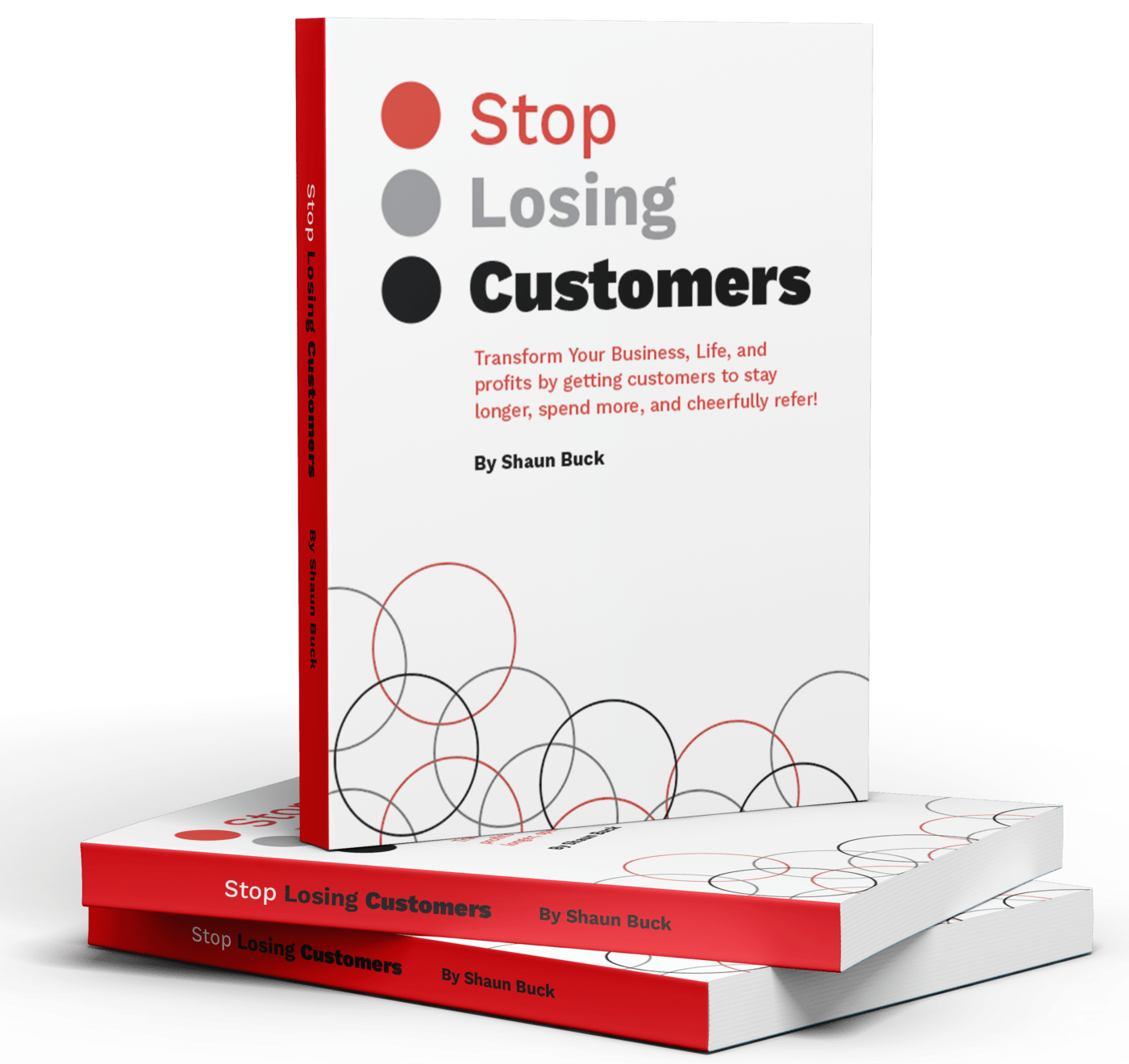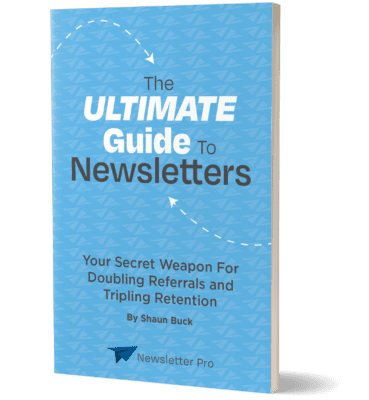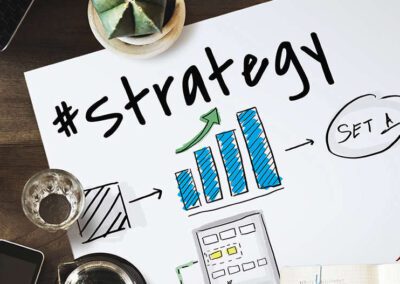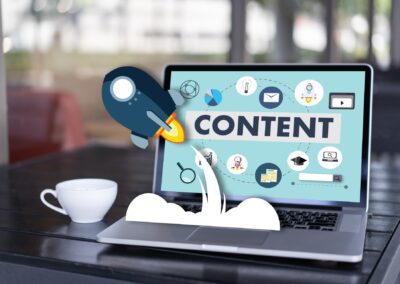Email newsletters, the unsung heroes of a solid marketing strategy, quietly drive customer engagement and retention through targeted campaigns, while many chase new trends. They consistently deliver promotional content directly to your subscriber list, ensuring emails remain a cornerstone of communication. In this guide, we’ll cut straight to the core of what makes an email newsletter not just good, but great, with engaging subject lines and compelling promotional content. We’re discussing best practices for email newsletters that evolve your newsletter design from skippable to unmissable, infusing newsletter ideas and content formats that engage readers. From crafting an email marketing subject line that begs to be clicked, to designing email newsletters content that speaks directly to your audience’s needs – these are the moves that turn every email campaigns send into an experience for your recipients. Whether you’re a seasoned company looking to refine your email marketing approach or you’re drafting that very first email newsletter, let’s link theory with practice and help ensure your subject lines grab attention and your email content stands out in a crowded inbox.
Crafting Engaging Subject Lines
To craft a killer email newsletter subject line, focus on action and personalization within your email marketing message, ensuring your newsletter design is engaging. Keep your email newsletters’ subject lines snappy to grab attention with your approach and avoid the dreaded ‘…’. For example, use powerful words.
Action Verbs Drive Opens
Crafting subject lines for your newsletters that start with a verb can make your message’s text stand out in an overcrowded inbox. Think of subject lines like a starting pistol at a race, signaling your reader to go – to open the newsletters, that is. Your approach should ensure the content grabs attention immediately. “Discover,” “Unleash,” or “Boost” are not just words; they’re invitations to an engaging experience through our approach in email newsletters, compelling subject lines, and captivating design.
Personalize for Your Reader
Imagine receiving an email newsletter with a subject line tailored just for you – you’d feel the need to open it, captivated by the personalized content, right? That’s the effect of using someone’s name in the email newsletters’ subject line content. But don’t stop there! Crafting email newsletters with a subject that taps into their interests makes the content inside seem tailor-made for them.
Short and Intriguing Wins
Ever got cut off mid-sentence? Annoying, isn’t it? That’s what happens when your newsletter content has a subject line that’s too long and gets chopped off in someone’s email list. Craft a concise subject under 50 characters to ensure your email newsletters’ content delivers full impact without getting snipped.
Design and Content Optimization
Mobile Device Compatibility
Imagine trying to click a tiny link in your email newsletters on your phone, struggling with the content layout. Frustrating, right? That’s why email newsletters need thumb-friendly navigation. It’s all about making it easy for folks to tap that subscribe button for email newsletters or follow a link to more content without zooming in or squinting.
Now, think about how content on web pages squish on phones sometimes, just like when formatting email newsletters for different devices. We don’t want that with newsletters. They’ve got to look good whether you’re viewing content on a big computer screen or your little smartphone, especially when it comes to email newsletters. That means using responsive layouts that automatically adjust.
And here’s the kicker: if your email newsletters’ content takes forever to load, people are going to bounce faster than a rubber ball. So, testing loading times is super important for keeping readers hooked on your content, especially when distributing email newsletters.
Newsletter Design Best Practices
Ever walked into a cluttered room? It’s overwhelming! Same goes for email newsletter design—too much content crammed in there and nobody knows where to look. White space in email newsletters is like giving your content room to breathe; it makes everything clearer and keeps readers’ eyes focused on your message.
Consistency in your email newsletters’ content is key too—it’s like wearing your favorite hoodie so friends recognize you from afar. Your brand colors and fonts should scream “you” from every pixel of your email newsletters, ensuring your content is instantly recognizable.
And font size in content and email newsletters isn’t just about not needing glasses to read. It’s about comfort and understanding the email newsletters content quickly, without any forehead wrinkles from squinting.
Incorporating Diverse Content Formats
Picture this: an email full of nothing but text. Boring! Incorporating visuals into your newsletters can transform a dull email into an engaging content celebration in the inbox—images, videos, infographics—you name it!
It’s like inviting friends over through email; embedding social media content in your newsletters can make subscribers feel part of something bigger and spark more engagement.
Also, who doesn’t love freebies? Offering downloadable goodies like e-books or white papers through your newsletter is like handing out ice cream on a hot day—everyone wants one in their email!
Building and Managing Subscriber Lists
Email newsletters shine when they reach the right inboxes. Crafting an email subscriber list with care is key to newsletter success.
Utilizing Double Opt-In
Double opt-in isn’t just a fancy term; it’s your first line of defense in building a robust email newsletter list. It ensures that those who sign up for your email newsletter really want it. This cuts down on spam complaints big time. When folks click confirm on your email newsletter, hit ’em with something cool right away. Offering a discount code or an exclusive peek at content in your newsletter makes subscribers feel like VIPs from the first email.
Tell them what they’ve signed up for, too. Whether it’s weekly newsletter tips or monthly email updates, clarity is king. They’ll appreciate knowing what email newsletter content to expect and when to expect it.
Segmenting for Targeted Outreach
Think of your email newsletter subscribers as different slices of a pie. Each slice has its own taste and preferences. By grouping your newsletter subscribers—say by age, location, or past email interactions and purchases—you can serve up exactly what tickles their taste buds.
Once you’ve got these segments, tailor your email newsletter messages like a pro. If one group digs DIY tips and another craves industry news in their newsletter, give each what they crave via targeted email content. It’s like being a mind reader without the crystal ball, directly through your newsletter email.
Keep an eye on how each segment reacts to your email newsletters. Are city slickers clicking more than country folks? Do newbies love discounts more than long-timers? These nuggets of info are pure gold for tweaking your email newsletter strategy.
Enhancing Personalization and Relevance
Personal touches make newsletters feel special. Valuable content keeps subscribers hooked.
Adding Personal Touches
Imagine getting an email that calls you by name. Feels good, right? That’s what dynamic tags do. They use the subscriber’s name in the email to create a one-on-one vibe. It’s like your email notification popping up with, “Hey, Alex!” instead of just “Hey, you!”
Now picture this: You’re reading an email about the people who make your favorite product. Behind-the-scenes stories are like VIP email passes to the cool club. They let subscribers peek into your world. Team intros are like handshakes through the screen.
Here comes the cherry on top: Celebrating milestones with your email readers. Got a one-year subscriber? Throw some digital confetti! It shows you’re paying attention to your email subscribers and appreciate them sticking around.
Sharing Valuable Content
Everyone loves learning new email tricks, especially if they make life easier. Tips and how-tos are like secret recipes for success in email newsletters. Industry insights? Think of email newsletters as insider info that can give subscribers an edge.
But it’s not just about teaching email etiquette; it’s also about solving email-related problems before they even pop up. Imagine a reader checking their inbox and thinking, “How did they know I needed this?” That’s the magic of curated email content answering common questions or issues.
And who doesn’t love feeling special with exclusive deals? Offering early access or discounts via email is like giving your subscribers a high-five for being awesome.
Calls-to-Action and Subscriber Expectations
Email newsletters should be a two-way street, where clarity meets action. Subscribers need to know what they’re signing up for, and email newsletters must guide them on what to do next.
Clear Subscription Details
Imagine walking into a store with no signs. Confusing, right? That’s how subscribers feel without clear details. They want the scoop on what they’ll get and how often. Will it be weekly tips or daily deals? Tell them straight up. And let’s face it, commitment can be scary. So make breaking up easy with an “unsubscribe” link that’s not playing hide-and-seek. It shows you’re confident in your content and respect their choices.
Now, about those secrets they whisper to your signup form – keep ’em safe! Spill the beans on how you protect their info like it’s a treasure chest because nobody likes unwanted spam or prying eyes.
Effective Use of Calls-to-Action
Ever been at a crossroads without a signpost? That’s your subscriber at the end of an email without a clear CTA. Don’t crowd that space with too many directions; one signpost does the trick. Think of your CTA as that big red button everyone wants to push – make it pop with colors that shout “Look at me!” But don’t just rely on looks; words have power too.
Crafting CTAs is like being a word wizard – conjure phrases that make subscribers want to act now, not later. Say you’re selling stargazing tents: “Claim Your Night Sky Throne!” beats “Buy Now” any day.
Timing and Frequency Strategies
Scheduling Consistency
Sticking to a regular schedule keeps subscribers in the loop. Aligning send times with when your audience is most active can boost engagement.
The sweet spot for sending your email newsletters isn’t just about picking a day and time out of thin air. It’s all about consistency. Imagine your favorite TV show airing at random times—you’d miss episodes, right? Your newsletter is no different. Subscribers get into the groove when they know when to expect your emails.
But how do you pick the perfect moment? You’ve got to be a bit of a detective here. Dive into analytics like Sherlock Holmes and track down those days and times your readers are most likely to click open. Maybe it’s Tuesday morning for some, or Thursday night for others; testing is key.
Pre-send Campaign Testing
Before hitting send, double-check everything in your campaign. Ensure personalization elements aren’t going haywire.
Ever sent an email only to find out later that a link was broken? Ouch! That’s why checking links, images, and formatting across various email clients is crucial before every send-off. It’s like rehearsing before the big show – you gotta make sure everything runs smoothly.
And don’t forget to proofread—twice or even thrice! A typo might seem small but can stick out like a sore thumb ruining the professional vibe of your newsletter. Plus, ensure those fancy personalization tricks actually work as intended because “Hey [FirstName]” doesn’t impress anyone!
A/B Testing Insights
Test one thing at a time for clarity on what works best. Let data guide improvements in future campaigns.
A/B testing is like having a secret weapon up your sleeve—it tells you what resonates with your audience without guessing games. Try tweaking just one thing at a time though—maybe start with subject lines that pack more punch than others or layouts that catch eyes faster.
Then it’s stats time! Which version made more subscribers click through or even buy something? Those insights are golden nuggets for shaping up future newsletters so they hit home runs every time.
Monitoring Engagement Metrics
Keep tabs on key indicators of subscriber interest over time. Use trends in these metrics to refine strategies regularly.
Think of engagement metrics as applause at the end of a performance—they tell you how well you did! Tracking opens, clicks, unsubscribes, and forwards helps paint that picture clearly over time.
Dwell time also gives clues about how gripping your content really is—are readers hanging onto every word or just skimming through? Watch these trends like a hawk and tweak accordingly; maybe it’s content style or timing that needs shaking up.
Measuring Success with Analytics
To truly nail down what works in your email newsletters, you need to get cozy with analytics. Delving into A/B testing and keeping an eye on engagement metrics can make a world of difference.
A/B Testing Insights
Ever wondered if that punchy subject line actually worked? Well, A/B testing is like your best buddy telling you the truth about your outfit—it gives it to you straight. You split your audience into two groups and send each a slightly different version of your newsletter. Maybe one has a GIF, and the other doesn’t. Then, you watch which one performs better.
It’s not just about going with your gut; numbers don’t lie. If more people opened the email with the GIF, then hey, maybe your readers are visual folks who love a good chuckle. Or if they clicked more on the one without it, perhaps simplicity is key for them. This isn’t guesswork; it’s science—email science.
And don’t just stop at one test. The best insights come from consistently trying new things—mixing up call-to-actions (CTAs), images, or even send times (remember our chat about timing?). Keep track of what combos score big with your audience.
Monitoring Engagement Metrics
Now let’s talk engagement metrics—the scoreboard of email marketing. These numbers are like applause at the end of a show; they tell you how well you did. Open rates are pretty straightforward—if they’re opening it, that’s good news! But there’s more to it than just open rates.
Click-through rates (CTR) are where the real magic happens—it means they didn’t just peek; they walked through the door! And keep an eye out for conversion rates too—that’s when someone takes action like making a purchase or signing up for something after clicking through.
But here’s the kicker: high bounce rates and lots of unsubscribes can rain on your parade real quick. It might mean something’s off—maybe you’re sending too many emails (oops, were we overeager?), or perhaps the content isn’t hitting home.
Conclusion
FAQs
What are the best frequencies for sending out email newsletters to your subscriber list? Crafting engaging subject lines and planning your email campaigns can influence the optimal sending frequency.
Aim to hit the sweet spot—too frequent and you risk annoying subscribers, too rare and they might forget you. Start with biweekly or monthly and adjust based on engagement.






